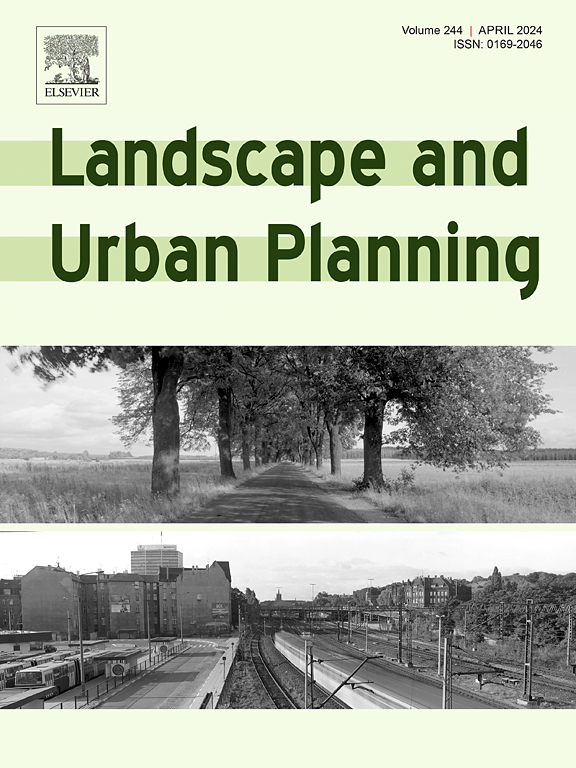使用基尼指数量化城市绿色不平等:系统回顾和建议的报告标准
IF 7.9
1区 环境科学与生态学
Q1 ECOLOGY
引用次数: 0
摘要
使用公园、生态系统服务和城市树木有助于人们和社区的健康。遗憾的是,公园的使用权往往分配不均,导致结果不同。基尼指数是一种最初针对经济差异而开发的测量方法,它可以帮助测量城市内部的分配平等性并在城市之间进行比较。为了研究其在城市森林和城市绿化中的应用,我们对 5 个数据库和 10 种期刊进行了系统性审查。结果发现,有 41 篇经同行评审的英文文章使用基尼指数来衡量城市绿化不平等现象,自 2011 年首次使用与城市绿化相关的基尼指数以来,这些文章的数量呈指数增长。大多数研究来自中国(22 篇,54%)和美国(10 篇,24%)。27 项研究(66%)报告了基尼系数方程,其中使用了 10 种不同的变式。有 18 篇论文(44%)采用了洛伦兹曲线。基尼指数被用于评估公园和绿色空间(28 篇,68%)、生态系统服务和服务(8 篇,20%)以及树木和街道绿化(7 篇,17%)的分布情况。15 篇论文(37%)使用多个时间点来衡量不平等的变化,包括模拟不同管理方案下的未来不平等。基尼系数是对分配不平等的量化测量,有助于城市之间的比较。基尼指数的应用有助于改进全球比较分析,但前提是必须对方法和结果进行一致的报告。我们为使用基尼指数的研究人员提供了建议的报告程序,包括:1)报告基尼指数方程;2)使用洛伦兹曲线直观显示基尼指数;3)报告变量输入。绿地研究还应明确界定绿地的纳入/排除标准,区分公园与绿化覆盖。本文章由计算机程序翻译,如有差异,请以英文原文为准。
Using the Gini Index to quantify urban green inequality: A systematic review and recommended reporting standards
Access to parks, ecosystem services, and urban trees support healthy people and communities. Unfortunately, access is often unequally distributed, leading to differential outcomes. Measuring the within-city distributional equality and comparing between cities can be facilitated by the Gini Index, a measure originally developed for economic disparities. To examine its applications in urban forestry and urban greening, a systematic review was conducted across 5 databases and 10 journals. Forty-one English, peer-reviewed articles were identified that used the Gini Index to measure urban green inequality, increasing exponentially since the first urban greening-related use of the Gini Index in 2011. Most studies were from China (n = 22, 54 %) and the United States (n = 10, 24 %). A Gini Index equation was reported in 27 studies (66 %) with 10 different variations used. Lorenz curves were included in 18 papers (44 %). The Gini Index was used to assess the distribution of parks and greenspaces (n = 28, 68 %), ecosystem disservices and services (n = 8, 20 %), and trees and street greenery (n = 7, 17 %). Fifteen papers (37 %) used multiple points in time to measure changes in inequality, including modeling future inequalities under different management scenarios. The Gini Index provides a quantitative measure of distributional inequality that facilitates comparisons between cities. The application of the Gini Index can help improve global comparative analyses, but only with consistent reporting of methods and findings. We provide recommended reporting procedures for researchers using the Gini Index, including 1) report the Gini Index equation, 2) visualize the Gini Index using a Lorenz curve, and 3) report the variable inputs. Greenspace research should also clearly define the inclusion/exclusion criteria of greenspace, differentiating parks versus green cover.
求助全文
通过发布文献求助,成功后即可免费获取论文全文。
去求助
来源期刊

Landscape and Urban Planning
环境科学-生态学
CiteScore
15.20
自引率
6.60%
发文量
232
审稿时长
6 months
期刊介绍:
Landscape and Urban Planning is an international journal that aims to enhance our understanding of landscapes and promote sustainable solutions for landscape change. The journal focuses on landscapes as complex social-ecological systems that encompass various spatial and temporal dimensions. These landscapes possess aesthetic, natural, and cultural qualities that are valued by individuals in different ways, leading to actions that alter the landscape. With increasing urbanization and the need for ecological and cultural sensitivity at various scales, a multidisciplinary approach is necessary to comprehend and align social and ecological values for landscape sustainability. The journal believes that combining landscape science with planning and design can yield positive outcomes for both people and nature.
 求助内容:
求助内容: 应助结果提醒方式:
应助结果提醒方式:


